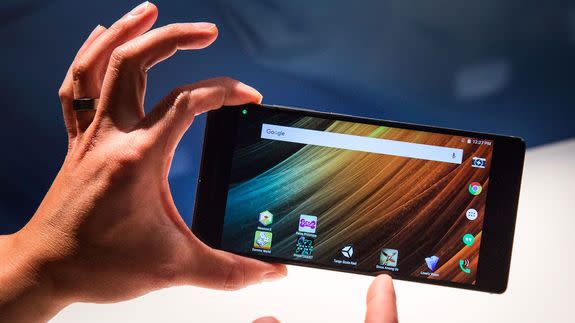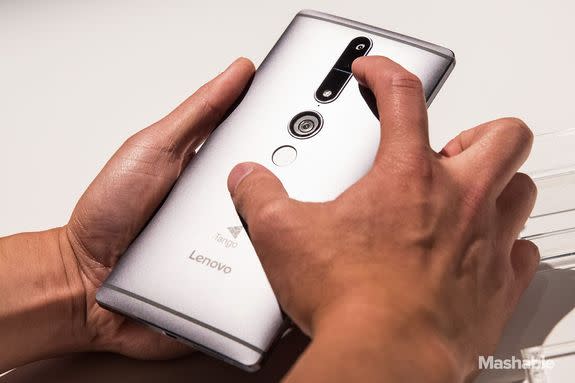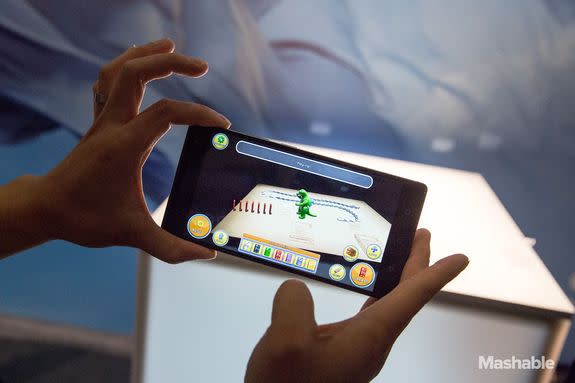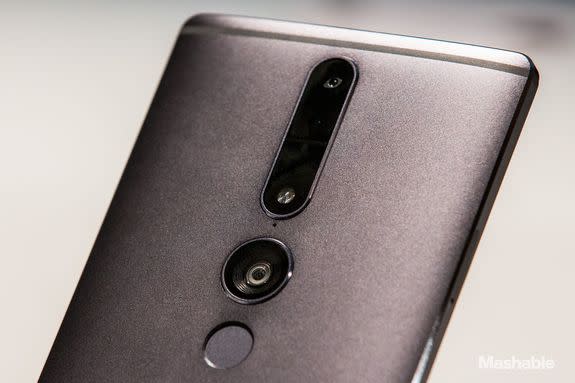The first Project Tango smartphone is a beast

It's finally here.
More than two years after Google first showed us a concept of what a 3D-sensing smartphone could look like, Lenovo has revealed the first consumer smartphone that takes full advantage of Project Tango: the Phab2 Pro.
SEE ALSO: Google and Lenovo launch the first Project Tango smartphone, and it's (literally) huge
First off, the phone is huge, almost comically so. With a 6.4-inch display and weighing in at more than half a pound, it looks — and feels — like a brick. Much of that size is due to the extra components that are required to make Tango (née Project Tango) function.
This includes: two extra cameras, one for motion tracking and one for depth sensing, along with specialized software that learns about your surroundings (this is especially necessary for any augmented reality applications.) The extra cameras sit on the rear of the device underneath the main 16 MP camera (which also supports 4k video, by the way) and above the fingerprint sensor.

Image: Andrew Burton for Mashable
That all makes for a rather crowded back side of the Phab2 Pro, but it looks about as good as you can expect given the number of components back there.
I wasn't able to put the main shooter, the 16MP rear camera, through a ton of shots but it seemed reasonably fast at focusing and the images looked crisp and clear.
Let's talk about apps
Perhaps more than any other Android device, Phab2 Pro (and any Tango device that comes after it) is dependent on the app experiences developers create. Apps will make or break Tango and on that front, Google and Lenovo seem to be off to a good start.
There are already more than 100 Tango-ready apps in Google Play and, now that there's an actual consumer device that can run them, there will likely be many more soon. And Lenovo showed off a few compelling examples of apps that are already available for the device.
One of the biggest use cases is games. We saw an augmented reality dominoes game that allows you to virtually set up dominoes on the surfaces around you.

Image: Andrew Burton for Mashable
There was also an educational app that allows you to place dinosaurs on the objects around you so you can learn more about them.
On the utility side, there were apps to measure distances and volumes (bye-bye tape measures) and apps to visualize furniture and appliances in your home.
These were all impressive but none of the apps I saw struck me as, in any way, essential. Sure, the games were fun but isn't Candy Crush more practical? And how often do you buy a new appliance or piece of furniture?
What's next
All this gets back to my main questions about the Pahb2 Pro: Who exactly is this for? Because, while I can easily imagine it being great for very specific use cases — like in schools or professionals who can leverage real-time measurements — I wonder who will actually want to use it as their main device. And it's difficult (literally!) to see around its massive size. When it comes down to it, I simply can't imagine actually carrying this phone around every day.

Image: Andrew Burton for Mashable
Now, I have never particularly liked phablets and the augmented reality experiences are, admittedly, compelling so your mileage may vary (and, actually, I hope it does.)
The $499 Phab2 Pro hits shelves in September.
